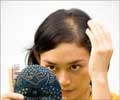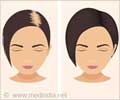Scientists have created the first detailed model for the 3-D shape of a strand of curly hair that can be used by computer animators and even engineers.

In the field, these materials often act like a stubborn garden hose whose intrinsic curves make it behave in unpredictable ways. In engineering terminology, these items - and hair - are all examples of a slender, flexible rod.
Pedro Reis, an assistant professor in MIT, said that his team's work doesn't deal with the collisions of all the hairs on a head, which is a very important effect for animators to control a hairstyle.
But it characterizes all the different degrees of curliness of a hair and describes mathematically how the properties of the curl change along the arc length of a hair, he said.
When Reis set out to investigate the natural curvature in flexible rods, he wasn't thinking of hair, but as he studied several small flexible, curved segments of tubing suspended from a structure in his lab, he realized they weren't so different from strands of curly hair hanging on a head.
That's when he contacted Audoly, who had previously developed a theory to explain the 2-D shape of human hair.
Advertisements
Given curvature, length, weight, and stiffness, their model will predict the shape of a hair, steel pipe, or Internet cable suspended under its own weight.
Advertisements
Reis and his co-authors describe the 3-D curl as a localized helix, where only a portion of the strand is curled, or a global helix, if the curliness extends the entire length up to the head.
A curl can change phase - from 2-D to 3-D local helix to 3-D global helix, and back again - if its parameters change. Because a strand of hair is weighted from the bottom by gravity, the top of the strand has more weight under it than the tip, which has none.
Thus, if the weight on a hair is too great for its innate curliness, the curl will fail and become either straight or helical, depending on the strand's length and stiffness.
The study is published in the Physical Review Letters.
Source-ANI














